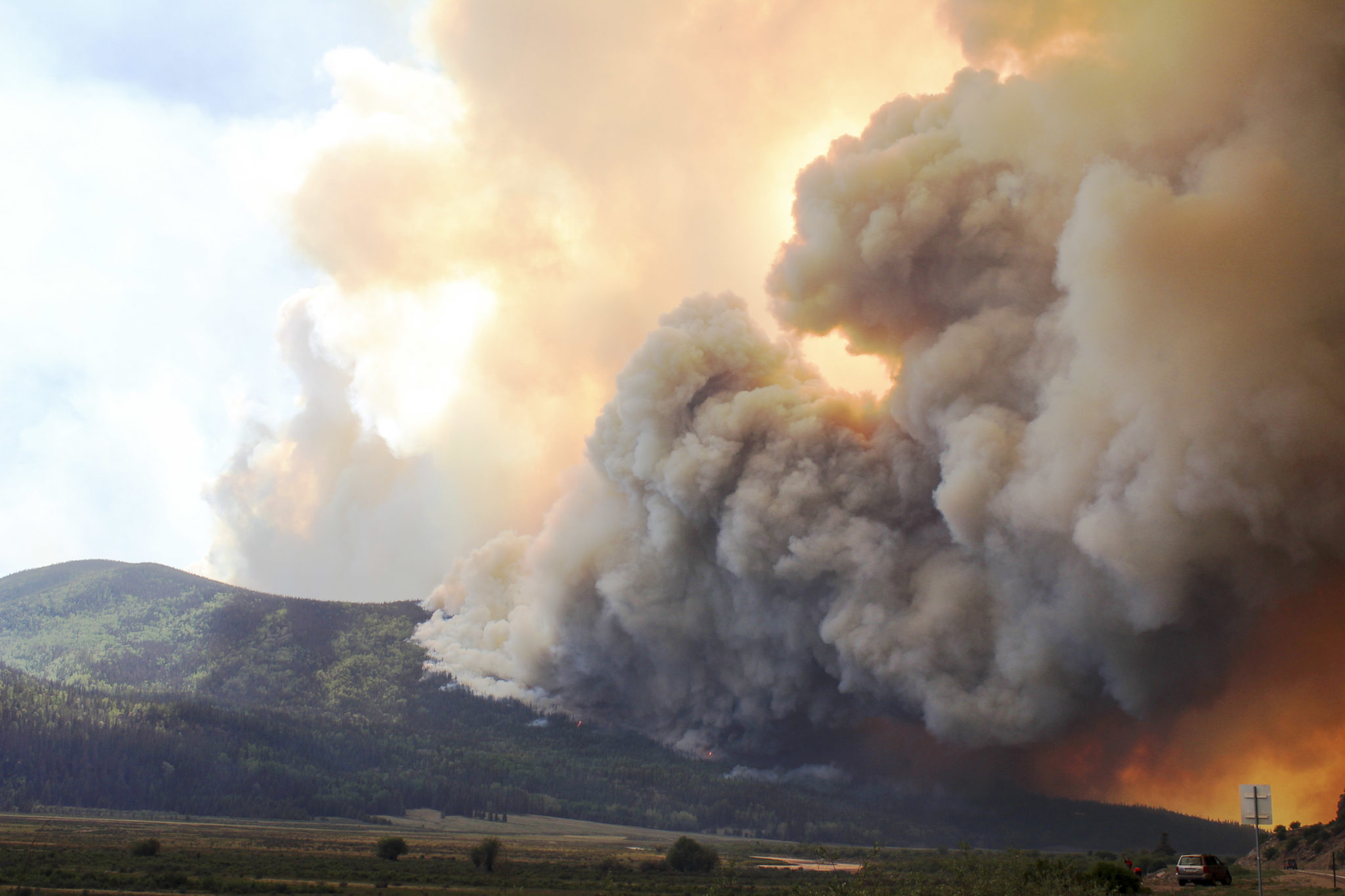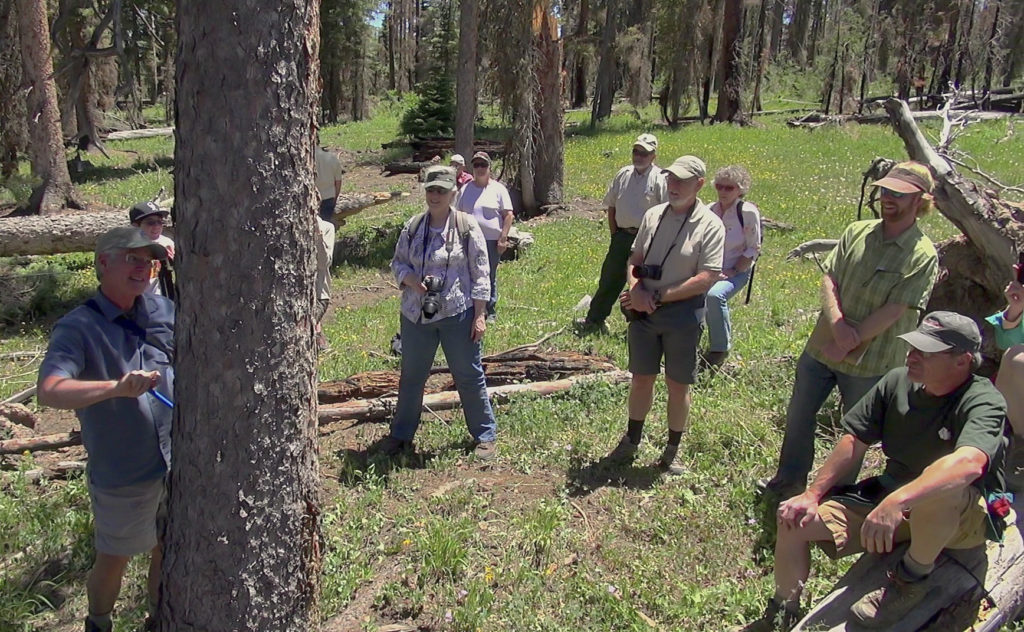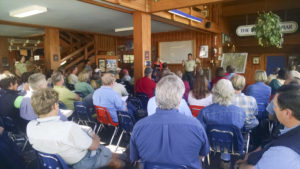
People conducting wildfire science research, making land management decisions, or working and living in areas prone to wildfire can easily connect to the latest wildfire science and fire management practices at Colorado State University through the Southern Rockies Fire Science Network.
The Network, or SRFSN, is one of 15 regional fire science exchanges across the country supported by the national Joint Fire Science Program. These networks were founded on the principle that applying science-based knowledge to land management and planning can minimize the negative impacts of wildfire, while harnessing fire’s benefit for renewing nature.
The group found a home within Warner College of Natural Resources Department of Forest and Rangeland Stewardship five years ago, and continues to expand across portions of its five state area thanks to congressional support and cooperation from regional resources. The Network offers outreach opportunities and information that engage people around fire history, managing and restoring fire-impacted areas, living with present wildfire and preparing for future wildfire conditions.
A new video series, “Bridging the Divide,” reveals the network’s role in coordinating and disseminating the latest regional fire-related information. Providing timely information is crucial for land agencies managing fire-affected areas and for communities living in areas where wildfires are becoming the new norm.
National Joint Fire Science Program
The Joint Fire Science Program was designated by Congress in 1998 to fund high-priority fire science research that help public agencies meet their land management objectives. The goal of these actions is to increase the exchange of science-based knowledge between researchers, managers, and the public, resulting in positive solutions for wildfire and land management.
A unique opportunity
“Bridging the Divide” is a four-part video produced by SRFSN that addresses the unique fire conditions during, and community outcomes after, the West Fork Fire Complex of 2013. The complex encompassed three simultaneous fires that quickly burned over 109,000-acres of beetle-killed spruce forests near Pagosa Springs in southern Colorado.
The video series uses fire footage and presentations from a series of workshops and field trips to illustrate unique wildfire conditions, land management responses, and community healing. Gloria Edwards, SRFSN’s program coordinator, worked with U.S. Forest Service personnel from the San Juan and Rio Grande National Forests, the Mountain Studies Institute, and local non-profits to organize these opportunities after the West Fork Complex fires.
“Although this was just one of numerous fires in 2013, The West Fork Fires had major impacts on the rural communities and areas downstream of the Rio Grande watershed.” Edwards said. “We wanted to bring scientists, agencies, and community members together to learn what the current research said about erosion, fisheries, and post-fire conditions so communities could work together and plan for the future”.
SRFSN outreach efforts began at the local level, but it became apparent with the West Fork Fire Complex that the greater message applied to wider audiences in the southern Rockies region.
“People encounter and experience wildfire in a variety of ways leading to a correspondingly wide range in how people understand the role and impact of fire on ecosystems and on their communities,” said Tony Cheng, CSU professor and SRFSN’s principal investigator. “’Bridging the Divide’ is a powerful forum that allows these different forms of knowledge to be shared, considered, and melded together.”
It’s rare for fire professionals and community residents to participate in open discussions where everyone involved can share their knowledge, and listen and learn from each other. Cheng explained this type of intense knowledge exchange lays a foundation for communities to become more resilient and adaptive to wildfire. The video reminds viewers that living with wildfire starts well before a lightning strike and continues well after the last embers are put out.
A regional conversation
Wildfire challenges that land managers and local communities now experience highlight the need for objective communication about this evolving topic. Extreme fire events will happen, so Edwards hopes to keep building more local wildfire networks in fire-prone communities from central Utah to the Black Hills of South Dakota before it does.
 “SRFSN is the only regional group focusing on wildfire information that spans state, agency, and local boundaries.” she said. “We work in habitat types from alpine tundra to Utah deserts, and it’s amazing how many wildfire issues these different areas share.”
“SRFSN is the only regional group focusing on wildfire information that spans state, agency, and local boundaries.” she said. “We work in habitat types from alpine tundra to Utah deserts, and it’s amazing how many wildfire issues these different areas share.”
Abundant material is readily available on the network’s website and social media feeds, but the actual goal, as the video series portrays, is to provide field excursions and personal interactions that promote growth, understanding and trust between scientists, managers and communities living with wildfire. The key to SRFSN’s progress has encompassed building something found within their lengthy name: a network.